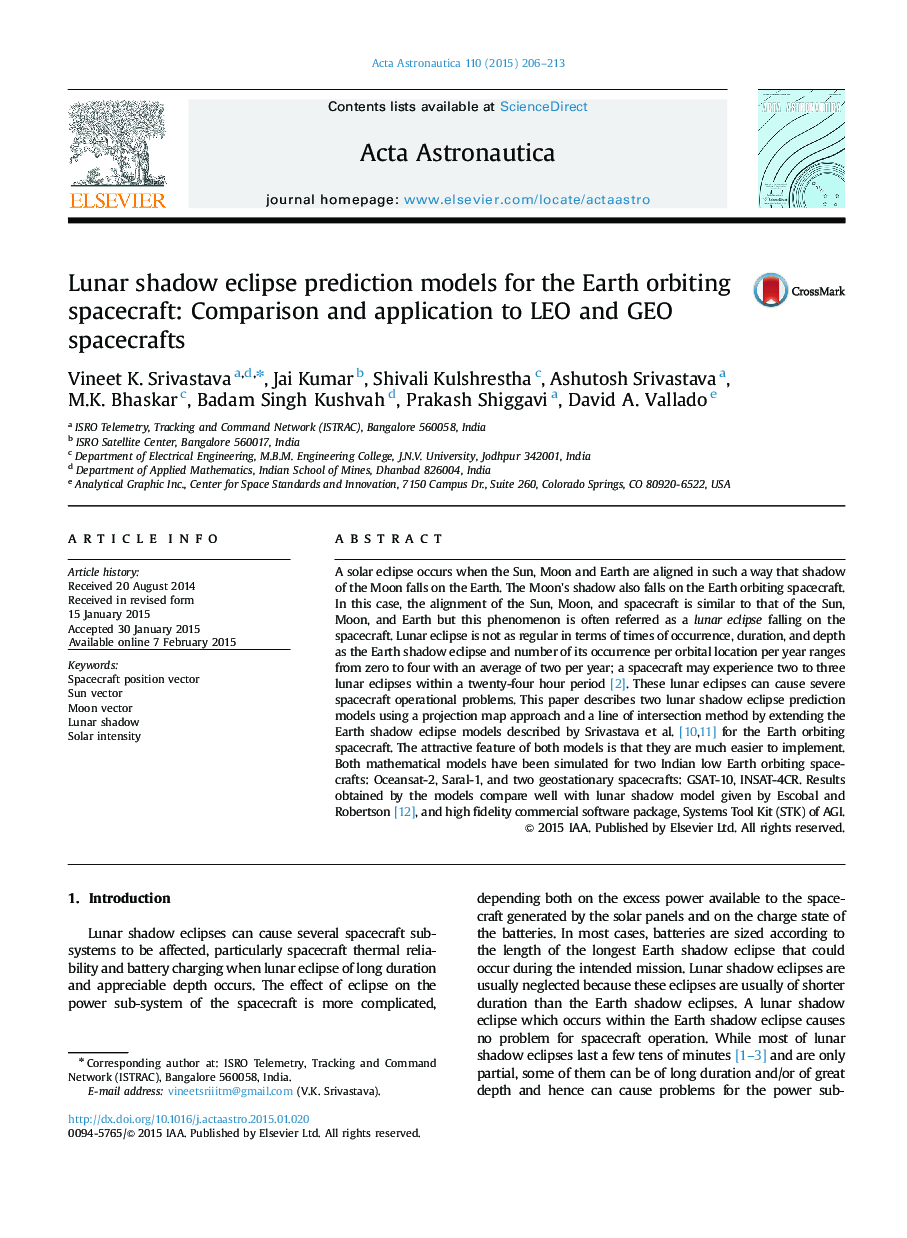| Article ID | Journal | Published Year | Pages | File Type |
|---|---|---|---|---|
| 1714414 | Acta Astronautica | 2015 | 8 Pages |
•Two lunar shadow eclipse prediction models are described for the Earth orbiting spacecraft.•Mathematical models are simulated to LEO and GEO spacecrafts.•Results are compared with other available models and STK.•Minimum solar intensity computation is described due to lunar shadow.•Computational time of the models is compared well.
A solar eclipse occurs when the Sun, Moon and Earth are aligned in such a way that shadow of the Moon falls on the Earth. The Moon׳s shadow also falls on the Earth orbiting spacecraft. In this case, the alignment of the Sun, Moon, and spacecraft is similar to that of the Sun, Moon, and Earth but this phenomenon is often referred as a lunar eclipse falling on the spacecraft. Lunar eclipse is not as regular in terms of times of occurrence, duration, and depth as the Earth shadow eclipse and number of its occurrence per orbital location per year ranges from zero to four with an average of two per year; a spacecraft may experience two to three lunar eclipses within a twenty-four hour period [2]. These lunar eclipses can cause severe spacecraft operational problems. This paper describes two lunar shadow eclipse prediction models using a projection map approach and a line of intersection method by extending the Earth shadow eclipse models described by Srivastava et al. [10] and [11] for the Earth orbiting spacecraft. The attractive feature of both models is that they are much easier to implement. Both mathematical models have been simulated for two Indian low Earth orbiting spacecrafts: Oceansat-2, Saral-1, and two geostationary spacecrafts: GSAT-10, INSAT-4CR. Results obtained by the models compare well with lunar shadow model given by Escobal and Robertson [12], and high fidelity commercial software package, Systems Tool Kit (STK) of AGI.
